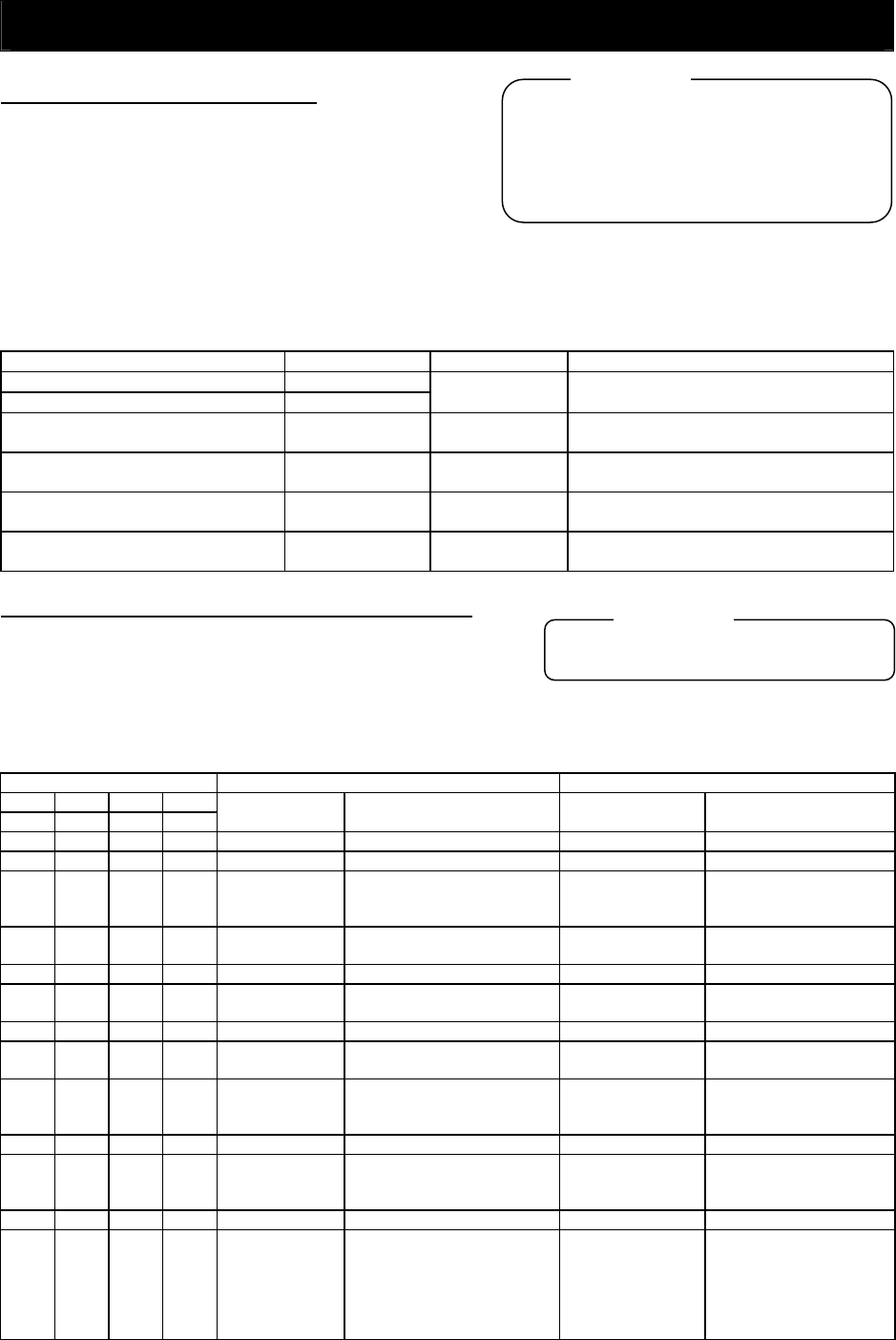
Chapter 4 Explanation of Functions
4 - 65
4.2.64 Over-torque signal (OTQ)
The inverter outputs the over-torque signal when it detects
that the estimated motor output torque exceeds the
specified level.
To enable this function, assign function "07" (OTQ:
over-torque signal) to an intelligent output terminal.
This function is effective only when the V/F characteristic curve selection selected with function "A044" or
"A244" is the sensorless vector control, 0Hz-range sensorless vector control, or vector control with sensor.
With any other V/F characteristic curve selection, the output of the OTQ signal is unpredictable.
When using the inverter for a lift, use the OTQ signal as the trigger to stop braking. Use the
frequency-arrival signal as the trigger to start braking.
Item Function code Set value Description
Terminal function C021 to C025
Alarm relay terminal function C026
07 OTQ: Over-torque signal
Over-torque (forward-driving) level
setting
C055 0. to 200. (%)
Threshold level to output the OTQ signal
during forward powering operation
Over-torque (reverse
regenerating) level setting
C056 0. to 200. (%)
Threshold level to output the OTQ signal
during reverse regeneration operation
Over-torque (reverse driving) level
setting
C057 0. to 200. (%)
Threshold level to output the OTQ signal
during reverse powering operation
Over-torque (forward
regenerating) level setting
C058 0. to 200. (%)
Threshold level to output the OTQ signal
during forward regeneration operation
4.2.65 Alarm code output function (AC0 to AC3)
The alarm code output function allows you to make the inverter
output a 3- or 4-bit code signal as the trip factor when it has
tripped.
Specifying "01" (3 bits) or "02" (4 bits) for the alarm code output (C062) forcibly assigns the alarm code
output function to intelligent output terminals [11] to [13] or [11] to [14], respectively.
The following table lists the alarm codes that can be output:
Intelligent output terminals When "4 bits" is selected When "3 bits" is selected
14 13 12 11
AC3 AC2 AC1 AC0
Factor code Cause of tripping Factor code Cause of tripping
0 0 0 0 Normal Normal operation Normal Normal
0 0 0 1 E01 to E03,E04 Overcurrent protection E01 to E03, E04 Overcurrent protection
0 0 1 0 E05, E38
Overload protection
Low-speed overload
protection
E05
Overload protection
Low-speed overload
protection
0 0 1 1 E07, E15
Overvoltage/input
overvoltage protection
E07, E15
Overvoltage/input
overvoltage protection
0 1 0 0 E09 Undervoltage protection E09 Undervoltage protection
0 1 0 1 E16
Instantaneous power failure
protection
E16
Instantaneous power
failure protection
0 1 1 0 E30 IGBT error E30 IGBT error
0 1 1 1 E06
Braking resistor overload
protection
- Other error
1 0 0 0
E08, E11, E23
E25
EEPROM, CPU, GA
communication, or main
circuit error
- -
1 0 0 1 E10 CT error - -
1 0 1 0
E12, E13, E35,
E36
External trip, USP error,
thermistor error, or braking
error
- -
1 0 1 1 E14 Ground-fault protection - -
1 1 0 0 E43, E44, E45
Invalid instruction in easy
sequence
Nesting error in easy
sequence
Easy sequence execution
command error
- -
A044/A244/A344: V/F characteristic curve selection,
1st/2nd/3rd motors
C021 to C025: Terminal [11] to [15] functions
C055: Over-torque (forward-driving) level setting
C056: Over-torque (reverse regenerating) level setting
C057: Over-torque (reverse driving) level setting
C058: Over-torque (forward regenerating) level setting
Related code
C021 to C025: Terminal [11] to [15] functions
C062: Alarm code output
Related code


















